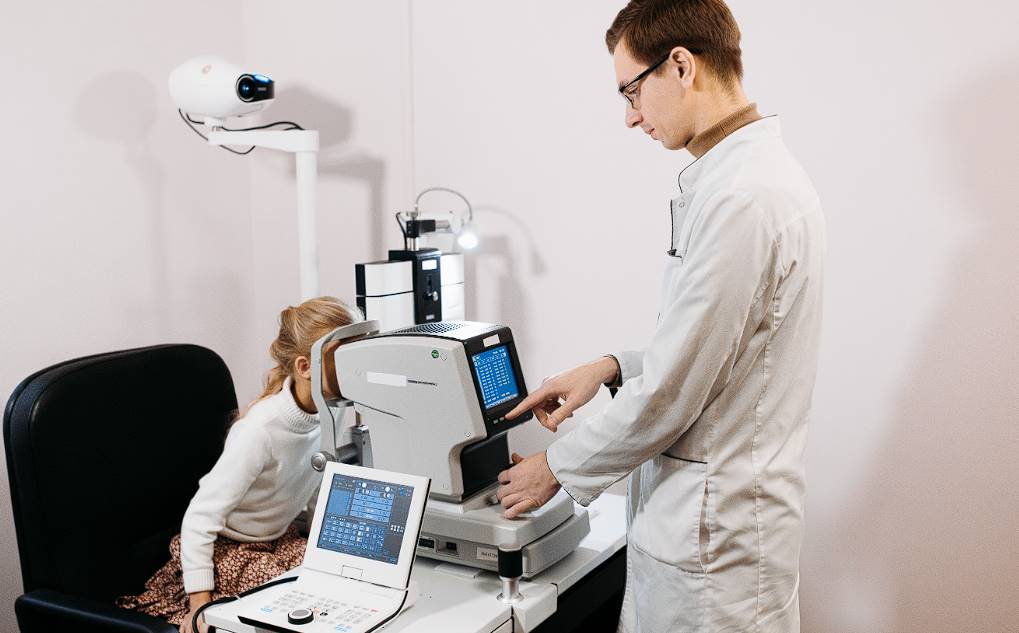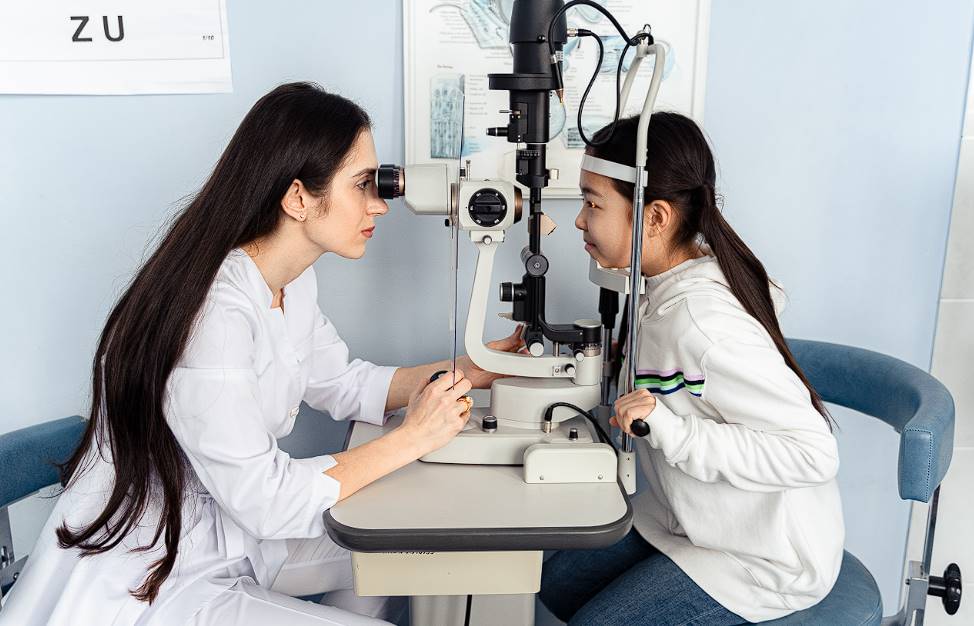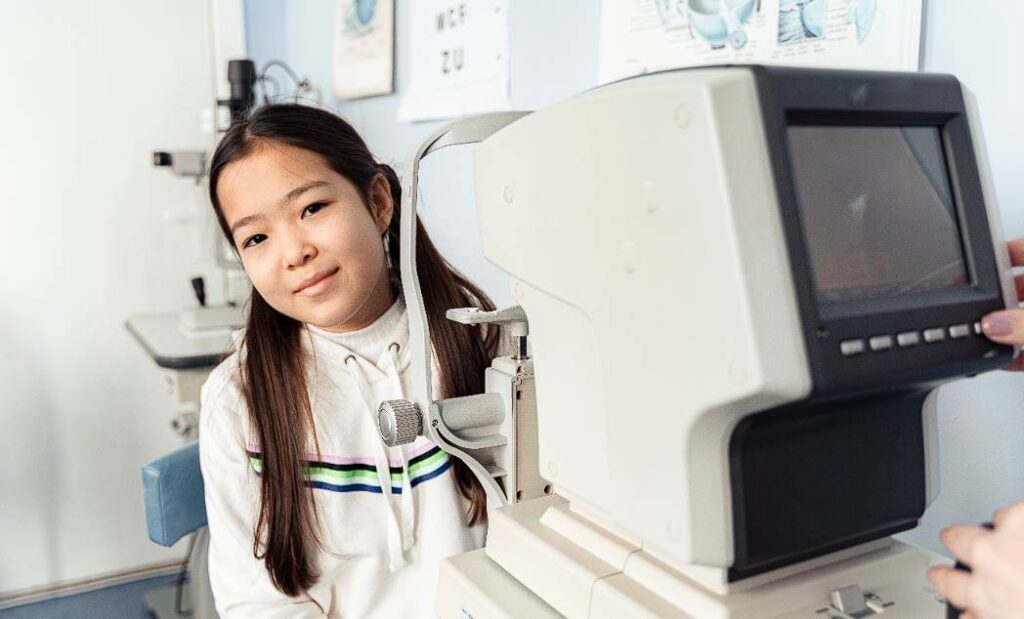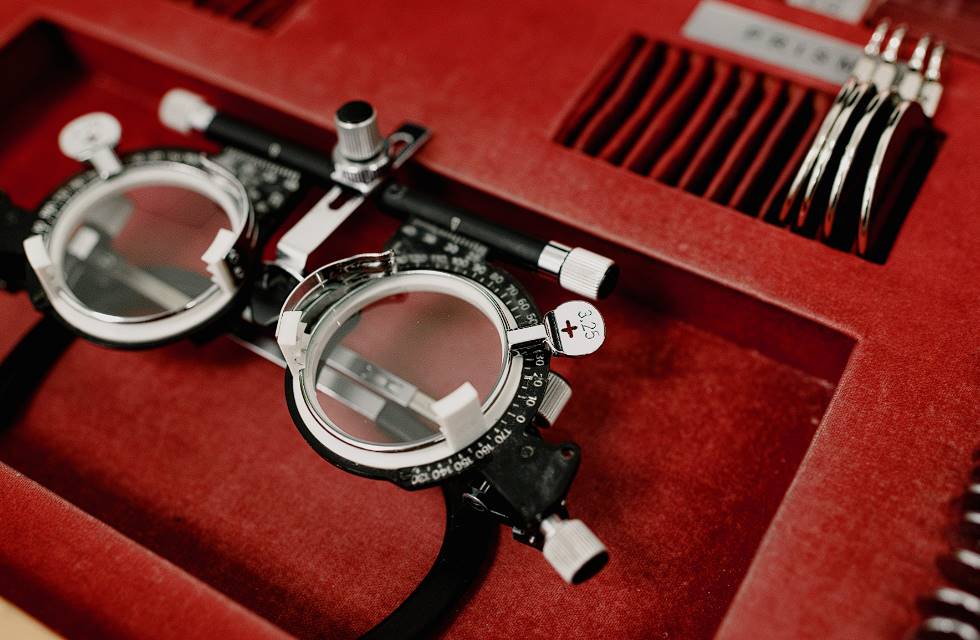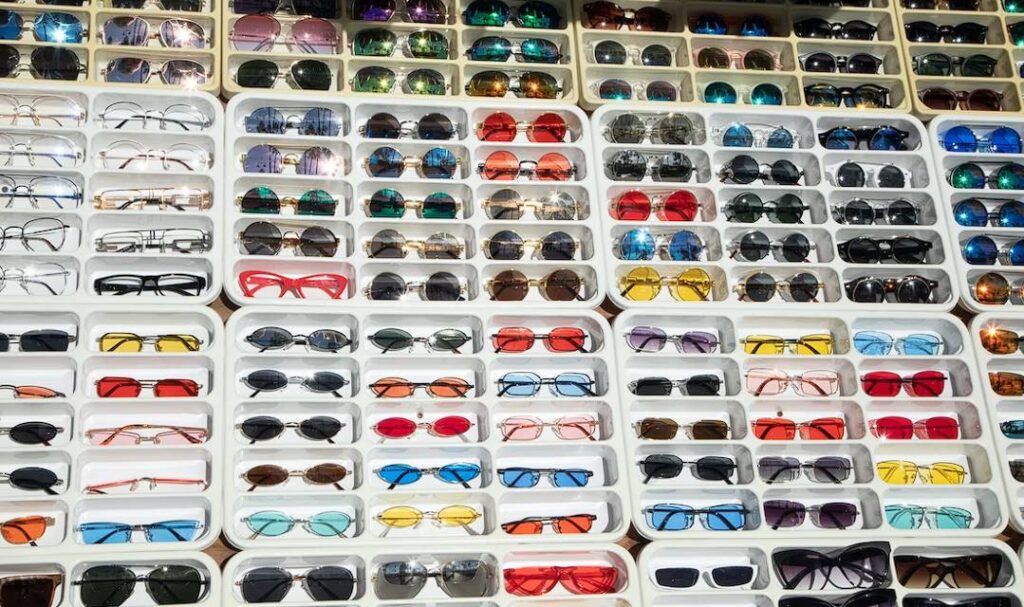Are you concerned about your kid's vision and want to know if it's normal? As a parent, you must know what defines normal vision for children. After all, healthy eyesight is important for every aspect of their growth and education. This blog post will educate you on how to safeguard your child's eyesight by recognising the warning symptoms of poor vision in children.
Several considerations come into play when determining what constitutes normal vision in children. A child with normal vision can see things clearly from a wide range of distances. They shouldn't have to strain their eyes or squint to see material meant for their age group. In addition, if a child's eyes are developing normally, they will have excellent depth perception, colour vision, and eye-hand coordination. Knowing these factors can help you determine if your child's vision is typical for their age.
But how can you know whether your kid has normal vision? In this all-inclusive tutorial, we'll review ophthalmologists' numerous tools to evaluate a child's eyesight. We will teach you how to take charge of your eye health, from scheduling annual tests to recognising warning signs of visual issues. Your child's visual health and success in school and social situations can benefit greatly from early detection and treatment of any problems with their eyes.
If you're interested in exploring the fascinating world of paediatric eye care and want to ensure your child's visual development is on track, you should join us. You'll feel more capable of helping your child's eyesight develop and contributing to their overall growth and achievement with the help of professional advice and useful ideas. Get ready to start a voyage of discovery and protection for your child's eyes. Let's go in and find out how to help kids maintain healthy vision.
What's Normal Kids' Eyesight?
What we call "normal visual acuity" in children spans a wide range of visual abilities. "visual acuity" describes one's capacity for seeing details at various distances. A child is regarded to have normal vision if they can see at 25 feet what an adult with normal vision can see at that distance using an eye chart. Aligned eyes are essential for normal vision since they allow binocular vision and depth perception. Children with healthy eyesight can accurately see and differentiate between colours.
In addition, they can detect three-dimensional space and accurately evaluate distances thanks to their depth perception. Another aspect of healthy eyesight is perceiving items to the side without moving the eyes or head. Children need to have their eyes checked often so that any problems can be addressed early on, allowing for the best possible visual development.
Children’s Eyes – Eyesight Vs Vision
Most people confuse vision with eyesight, but the two terms are distinct. It's crucial to be aware of these variations to recognise and address any issues with a child's vision. If your child has vision or eyesight problems, it may affect how well they are able to learn or play. Don't hesitate to schedule an appointment with an ophthalmologist if you notice any issues with your child's vision.
Eyesight
Children should have their eyes examined at birth and again at six weeks. If there are no warning signs of trouble every two years, you should have your child's eyes checked. A patient's eyesight will be tested by having them read numbers and letters from a chart. If your child has developed clear images in the back of their eyes, they have good eyesight. One's eyesight can be checked both up close (at a reading distance) and far away (at 20 feet). If your kid can see perfectly at 20 feet, they have 20/20 vision.
Vision Problems
It is unlikely that a youngster with 20/20 vision actually has no visual impairments. Reading a chart in a single-light situation is relatively easier than other tasks that rely on vision. When your eyes operate together, a phenomenon known as binocular vision occurs. Even if your child has perfect eyesight, impaired vision might result from improper eye alignment.
Myopia, often known as near-sightedness, is a frequent condition among children. Farsightedness and astigmatism are also prevalent refractive problems in children. Any abnormality in the eye's size or form can cause a refractive error, which disrupts the eye's ability to focus light properly on the retina.
Understanding Childhood Vision Impairment
If your child has vision difficulties, you may not notice right away. This is because your kid may have perfectly healthy eyes. However, you may discover a shift in their actions or eye movements.
It's crucial to watch for warning indications of vision impairments in infants. Lack of eye movement, where the eyes do not follow your face or another object, and lack of responsiveness to strong light are two indicators. If their pupils are white or foggy, have an inward or outward gaze, or avoid eye contact, these could all be signs of vision problems.
There are other warning indicators to look for in preschool and toddler years. If a child in this age range has trouble seeing, they may constantly bring things closer to their face. Another symptom of eye strain or pain is frequent rubbing of the eyes. In addition, people may complain that they are experiencing eye tiredness, which may indicate that their visual system is being overworked. When their eyes are staring in opposite directions, it may be time to do some investigating. Finally, problems with depth perception or spatial awareness may be present if young children are prone to frequent falls or trips.
By keeping an eye out for these symptoms and consulting an expert, parents and teachers can help their young children get the attention and assistance they need if they are experiencing vision problems.
What Are Some Common Eye Conditions?
Here are some typical eye problems:
- Strabismus: characterised by a divergent gaze.
- Hyperopia or long-sightedness: impacts the clarity of adjacent items.
- Amblyopia: where either or both eyes have blurry vision.
- Myopia or short-sightedness: causes distant objects to lose definition.
- Astigmatism: Vision impairment due to a small distortion of the eye's lens (cornea)
The terms "squint" and "lazy eye" are used to describe strabismus and amblyopia, respectively. If you ignore your child's squint, a lazy eye may develop.
Your Child's Vision And Risk Factors
Understanding how your child's eyes are affected by their surroundings is crucial as a parent. Their visual health is affected by various variables, including the time spent in front of devices and in direct sunshine. So, let's take a look at the major threats to your child's eyesight and figure out how to protect their sight for a better tomorrow.
Screen Time
Your child's eyesight may be negatively impacted by prolonged exposure to digital screens like tablets and smartphones. Eyestrain, dry eyes, blurred vision, headaches, and general discomfort all result from staring at a screen for too long. It's crucial to anticipate and deal with any problems that may arise.
Children under the age of two are advised by Australian guidelines to limit their exposure to screens. Children under the age of five should spend at most an hour a day in front of a screen. These recommendations aim to reduce the hazards associated with prolonged screen use and encourage healthy eye development.
Sun Safety and Sunglasses
Your child's long-term eye health depends on you taking precautions to prevent sun damage. The sun's ultraviolet (UV) radiation is a double-edged sword. UV radiation can cause temporary irritation to the eyes, leading to redness, watery eyes, and a sensitivity to light. Long-term sun exposure, however, can have significantly more severe consequences.
Ocular damage, cataract formation, and even macular degeneration can result from prolonged exposure to ultraviolet light. Precautions must be taken to protect your child's eyes from the sun's harmful rays. If your child must be outside throughout the day, remind them to wear a hat and UV-protective eyewear that match Australian standards. Your child's time in the sun will be drastically cut if you implement these practices into their daily routine.
Protection of the Eyes from Injury
Eye injuries are common and can happen anywhere, at home or while playing. As a parent or guardian, you should do everything you can to protect your child's eyes from harm. Avoid exposing your child to chemicals, paints, pesticides, and sharp objects like coat hangers, knives, and pencils, indoors and outdoors. Please keep your child safe as they discover and play in their surroundings.
When participating in activities that could cause harm to the eyes, such as sports or do-it-yourself tasks, you and your child should always wear protective eyewear. Wear safety goggles or other protective eyewear to reduce your risk of an eye injury.
If your child has an eye injury, you should immediately take them to an eye doctor (optometrist or ophthalmologist). These doctors are qualified to evaluate injuries and administer the appropriate care to stop them from worsening.
How Is Blindness Handled Medically?
Your child will be eligible for early intervention treatments if diagnosed with blindness. Your child's skill set will flourish, and you'll all feel more supported emotionally. A variety of medical practitioners, including but not limited to:
- Physiotherapists
- Orthoptists
- Occupational therapists
Orthotists, occupational therapists and physiotherapists are crucial members of the healthcare team who make important contributions to patients' quality of life across a wide range of conditions.
- Orthoptists are your go-to experts when diagnosing and treating vision and eye movement abnormalities. They collaborate closely with ophthalmologists to provide complete care for patients, especially those suffering from ocular abnormalities like strabismus (crossed eyes) or amblyopia (lazy eye) in either childhood or adulthood. Orthoptists evaluate patients' eyesight and coordination and then administer treatments like eye exercises and other therapies.
- Physical therapists, often known as physiotherapists, specialise in helping patients regain full use of their bodies. They help people of all ages who require pain relief, improved strength and flexibility, and general health and wellness. Physiotherapists aid patients in their recovery from surgeries, injuries, or medical illnesses by employing a wide range of methods, including manual therapy, therapeutic exercises, and modalities like heat or electrical stimulation.
- Occupational therapists help people regain their independence and improve their quality of life through participation in meaningful activities and routine duties. They assist people of various ages, from young children to older people. Mental, physical, and emotional strengths and weaknesses are all evaluated by occupational therapists so that they can design effective treatment plans for each patient. They could aid in improving motor skills in children with developmental delays or in modifying settings for adults.
These experts play crucial roles in healthcare settings, coordinating with other specialists to treat patients with various diseases, from vision problems to broken bones. Orthoptists, physiotherapists, and occupational therapists make substantial contributions to the quality of life of their patients by facilitating the restoration or maintenance of physical function.
Conclusion
Children's development and success in school depend on intact vision. Having good depth perception, colour vision, and eye-hand coordination are all essential components of this skill. Having properly aligned eyes is crucial for healthy eyesight since it enables binocular vision and depth perception. Appropriate colour vision, depth perception, and the ability to judge distances are all hallmarks of normal visual development in young children.
It's important to check a baby's eyesight at birth and again at six weeks. Children should get their eyes checked every two years if there are no indicators of concern. If a kid has 20/20 vision, they can see properly from 20 feet away. Binocular vision, the result of coordinated eye movement, can exacerbate preexisting visual impairments. In children, refractive errors such as myopia, nearsightedness, farsightedness, and astigmatism are common.
Parents and educators must have an understanding of visual impairments in children in order to help kids who are having trouble seeing get the support they need. Strabismus, hyperopia, amblyopia, myopia, and astigmatism all rank among the most often encountered eye disorders. For a brighter future, it is crucial to spot potential issues and take measures to safeguard their eyesight.
Prolonged use of digital devices like tablets and smartphones is another huge risk to a child's eyesight because it can cause eye strain, dry eyes, impaired vision, headaches, and general discomfort. To ensure a child's vision stays healthy and happy, it's important to look out for potential issues and address them head-on. The Australian government recommends no more than one hour of screen time each day for children younger than two. Because exposure to sunlight can cause temporary discomfort and eye damage, sun protection measures, such as wearing sunglasses, are essential for long-term eye health. If you want to keep your child's eyes safe, you should keep them away from things like chemicals, paints, pesticides, and sharp items.
Parents should always wear safety glasses when doing anything that can damage their eyes. Take your kid to the eye doctor if they sustain an injury to their eyes.
Medical professionals such as physiotherapists, orthoptists, occupational therapists, and others work together to treat blindness. Physical therapists assist patients to regain full use of their bodies, while orthoptists evaluate and treat issues with vision and eye movement. Occupational therapists work to restore function and enhance the quality of life through participation in meaningful occupations. The specialists here treat patients with everything from eye infections to bone fractures.
Content Summary
- Parents need to understand what constitutes normal vision for children.
- Healthy eyesight is crucial for a child's growth and education.
- Recognising warning signs of poor vision is essential for safeguarding a child's eyesight.
- Normal vision in children includes clear sight at various distances without straining or squinting.
- Depth perception, colour vision, and eye-hand coordination are important indicators of healthy eyesight.
- Regular eye exams and early detection of visual issues contribute to a child's visual health and success.
- Ophthalmologists use various tools to evaluate a child's eyesight.
- Understanding the difference between eyesight and vision is crucial for addressing issues.
- Eye exams should be conducted at birth and regularly thereafter.
- Eyesight can be tested both up close and far away to determine visual acuity.
- Perfect eyesight doesn't necessarily mean no visual impairments.
- Improper eye alignment can lead to impaired vision even with 20/20 eyesight.
- Myopia, hyperopia, astigmatism, and other refractive problems are common in children.
- Warning signs of vision impairments in infants include lack of eye movement and unresponsiveness to light.
- Preschool and toddler years may exhibit symptoms like bringing things closer and eye rubbing.
- Eye tiredness may indicate overworked visual system.
- Staring in opposite directions or frequent falls may indicate depth perception issues.
- Strabismus, hyperopia, amblyopia, myopia, and astigmatism are common eye conditions.
- Prolonged screen time can lead to eyestrain, dry eyes, and blurred vision.
- Limiting screen time for young children is recommended.
- Protecting children's eyes from the sun's harmful rays is crucial.
- Prolonged sun exposure can cause ocular damage and cataracts.
- Protective eyewear and hats should be worn in the sun.
- Eye injuries can occur anywhere, and precautions should be taken to protect children's eyes.
- Protective eyewear should be worn during activities that pose a risk of eye injury.
- Immediate medical attention is necessary for eye injuries.
- Early intervention treatments are available for children diagnosed with blindness.
- Orthoptists, physiotherapists, and occupational therapists play crucial roles in healthcare.
- Orthoptists diagnose and treat vision and eye movement abnormalities.
- Physiotherapists help patients regain full use of their bodies through various methods.
- Occupational therapists help improve patients' quality of life through meaningful activities.
- Collaboration among healthcare specialists is important in treating various conditions.
- Regular eye exams are essential for monitoring a child's vision.
- Early detection and treatment of vision problems contribute to a child's overall well-being.
- Warning signs of vision impairments should be observed and addressed by experts.
- Eye exams should be conducted regularly throughout childhood.
- Children should be protected from hazards that can cause eye injuries.
- Precautions must be taken to prevent sun damage to children's eyes.
- Eye injuries can occur at home or during play and should be avoided.
- Protective eyewear should be worn during activities that pose a risk of eye injury.
- Immediate medical attention is necessary for eye injuries.
- Early intervention treatments support a child's development and emotional well-being.
- Orthoptists, physiotherapists, and occupational therapists contribute to patients' quality of life.
- Orthoptists diagnose and treat vision and eye movement abnormalities.
- Physiotherapists help patients recover through various methods.
- Occupational therapists design effective treatment plans to improve motor skills.
- Collaboration among specialists is important for treating different conditions.
- Orthoptists, physiotherapists, and occupational therapists contribute to physical function restoration.
- Regular eye exams are crucial for monitoring changes in a child's eyesight.
- Prompt evaluation and treatment of vision problems contribute to a child's overall well-being.
Frequently Asked Questions
It is recommended to have your child's eyesight assessed by a healthcare professional during their infancy, around 6 to 12 months of age. This early assessment helps identify any potential eye problems and ensures timely intervention if needed.
There are several signs that may indicate a vision problem in children. Look out for the following:
- Frequent eye rubbing or blinking.
- Squinting or tilting the head to see better.
- Excessive tearing or redness in the eyes.
- Complaints of headaches or eye strain.
- Holding books or objects too close to the face.
- Avoiding activities that require visual concentration, such as reading or drawing.
- Lack of interest in watching television or participating in visual tasks.
- Struggling with hand-eye coordination activities, like catching a ball.
If you notice any of these signs, it's advisable to consult an eye care professional for a thorough evaluation.
While a comprehensive eye examination by a qualified eye care professional is the most accurate way to assess your child's eyesight, you can perform a basic home test using the following steps:
- Stand a few feet away from your child and ask them to cover one eye with their hand or a small object.
- Show them an object or picture at a moderate distance and ask them to identify it.
- Repeat the process with the other eye covered.
- Observe if they can clearly see and identify objects without squinting or struggling.
- Keep in mind that this home test is not a substitute for a professional evaluation, but it can help you identify any noticeable issues that require further examination.
Normal eyesight for children is typically defined as having visual acuity, or sharpness of vision, that falls within a specific range. A common benchmark is 20/20 vision, which means a child can see at 20 feet what a person with normal vision can see at the same distance. However, it's important to note that visual acuity can vary among children based on their age and developmental stage. Regular eye check-ups with an eye care professional can help determine what is considered normal for your child.
Routine eye examinations are crucial for maintaining good eye health in children. The recommended frequency for eye exams depends on the child's age and any specific risk factors they may have. As a general guideline:
- Infants should have their first comprehensive eye examination at 6 to 12 months of age.
- Preschool children (ages 3 to 5) should have at least one eye exam during this period.
- School-age children (ages 6 to 18) should have an eye exam every two years, or as recommended by their eye care professional.
- Children with existing eye conditions or those at a higher risk may require more frequent examinations as advised by the eye care professional.
- Regular eye exams can help detect any vision problems early on and ensure appropriate treatment, if necessary, to support optimal eyesight development in kids.

